Op-ed | Space and SPACs: A COVID Romance?
Wednesday, 08 December 2021 21:00
For SPAC investors, the heavy focus on a quick ROI – and overall risk aversion – may ultimately make SPACs and the space sector an imperfect fit.
'Would you like a little ice with your exoplanet?' For Earth-like worlds, that may be a tall order
Wednesday, 08 December 2021 16:33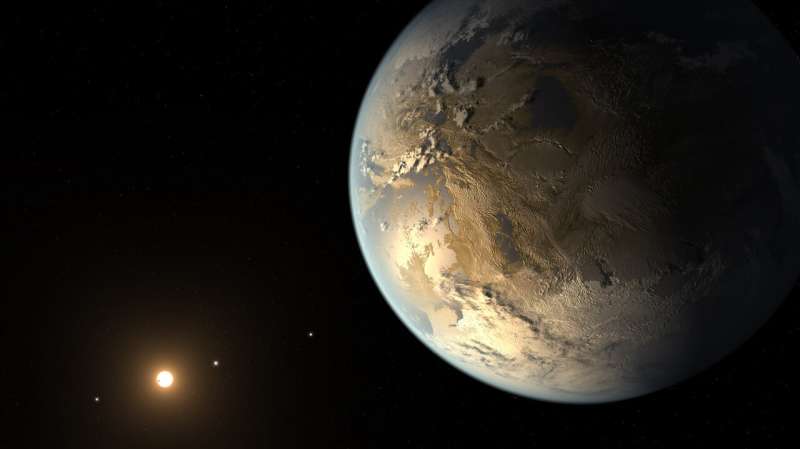
Exoplanets are experiencing a stratospheric rise. In the three decades since the first confirmed planet orbiting another star, scientists have catalogued more than 4,000 of them. As the list grows, so too does the desire to find Earth-like exoplanets—and to determine whether they could be life-sustaining oases like our own globe.
The coming decades should see the launch of new missions that can gather ever-larger amounts of data about exoplanets. Anticipating these future endeavors, a team at the University of Washington and the University of Bern has computationally simulated more than 200,000 hypothetical Earth-like worlds—planets that have the same size, mass, atmospheric composition and geography as modern Earth—all in orbit of stars like our sun.
Rocket Lab shows off its new reusable neutron rocket, due for launch in 2024
Wednesday, 08 December 2021 16:30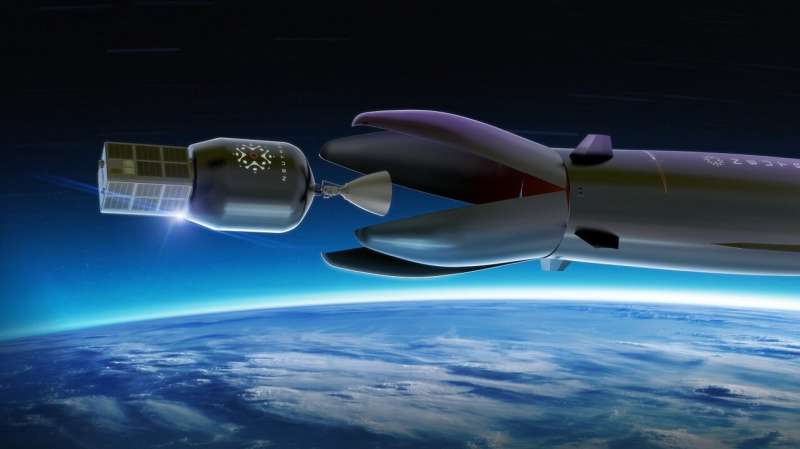
On December 2, 2021, the commercial space company Rocket Lab unveiled the detailed architecture of their Neutron rocket for the first time. In a live-streamed event, the company showcased all the new elements that will make this "megaconstellation" launcher a serious contender in the coming years. These include updated details about the rocket's design, materials, propulsion, and reusability architecture.
This new vehicle builds on Rocket Lab's experience with their Electron rocket, the small-satellite launcher they debuted back in 2017. This two-stage, lightweight carbon composite rocket relied on the first flight-ready electric pump-feed cycle (aka. Rutherford) engine to launch payloads of 300 kg (661 lbs). With 22 launches and 107 satellites deployed to date, the Electron has become the most frequently launched U.S. rocket since 2019.
In the summer and fall of 2020, Rocket Lab began experimenting with reusability by retrieving an Electron first-stage booster with a helicopter and net.
High wind delays Michael Strahan's space trip with 5 others
Wednesday, 08 December 2021 16:21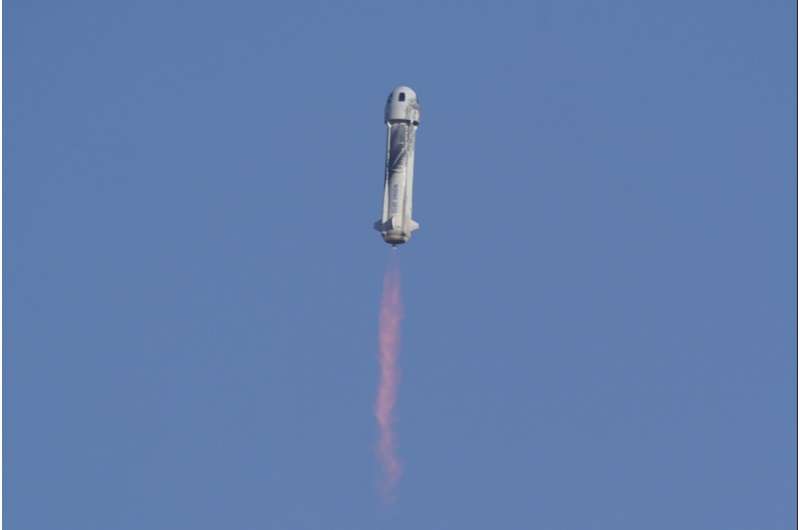
Moth balls thrust satellites into space
Wednesday, 08 December 2021 16:10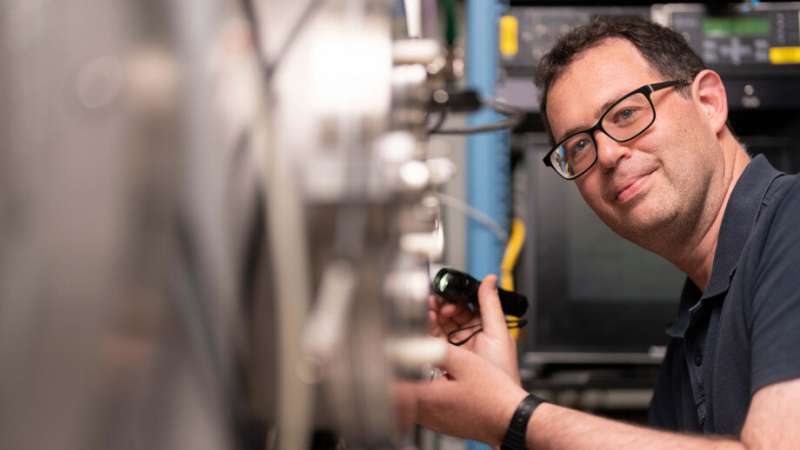
The chemical in moth balls, naphthalene, will be tested in space in a new satellite rocket propulsion system, Bogong, developed at The Australian National University (ANU).
Scientists have designed the innovative thruster, with a familiar odor, in only six months from design to delivery. Primary testing was conducted on campus at ANU.
The Bogong will launch into space in mid-2022 amid a group of half a dozen small satellites that Australian space services company Skykraft will test for tracking and communication with aircraft, facilitated by the Canberra-based space company Boswell Technologies.
ANU Ph.D. scholar Mr Dimitrios Tsifakis, came up with the idea for using hot naphthalene as opposed to hot charged gas plasma systems as a rocket thruster for small satellites.
"Naphthalene is ideal because when it is heated it goes straight from solid to gas, with no liquid sloshing about in the thruster," he said.
"It is cheap, non-corrosive and easily available.
"You can get moth balls in the supermarket. Everyone knows that old smell in granny's wardrobe; now it is the newest thing in space technology.
Singapore's first 3D-printed artefact to be launched to the moon
Wednesday, 08 December 2021 16:01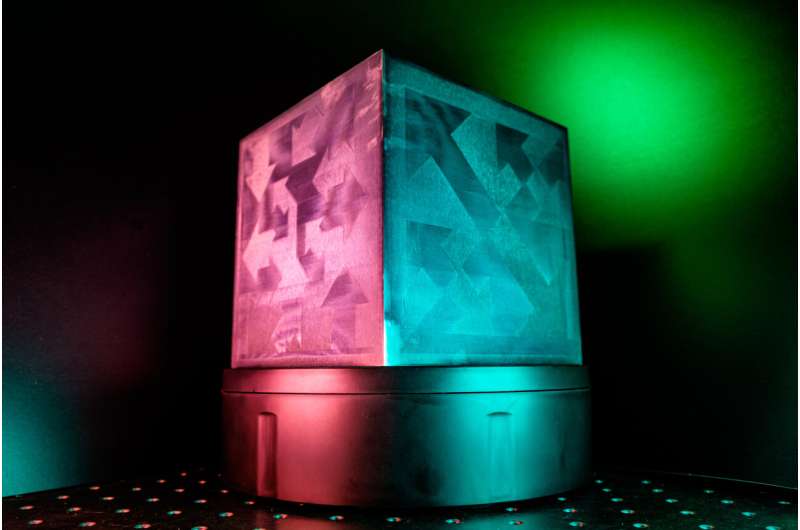
The Moon Gallery Foundation is developing an art gallery to be sent to the Moon, contributing to the establishment of the first lunar outpost and permanent museum on Earth's only natural satellite. The international initiative will see one hundred artworks from artists around the world integrated into a 10 cm x 10 cm x 1 cm grid tray, which will fly to the Moon by 2025. The Moon Gallery aims to expand humanity's cultural dialog beyond Earth. The gallery will meet the cosmos for the first time in low Earth orbit in 2022 in a test flight.
The test flight is in collaboration with Nanoracks, a private in-space service provider.
Ariane 5 moved to meet Webb
Wednesday, 08 December 2021 13:00
The Ariane 5 launch vehicle which will launch the James Webb Space Telescope was moved to the final assembly building at Europe’s Spaceport in French Guiana on 29 November 2021.
GHGSat to launch three spacecraft on Falcon 9
Wednesday, 08 December 2021 12:02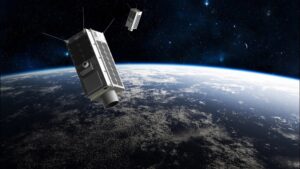
GHGSat, a Canadian company planning a constellation of satellites to monitor greenhouse gas emissions, announced Dec. 8 it will launch its next three satellites on a Falcon 9 in mid-2022.
Soyuz launches Japanese private astronauts to ISS
Wednesday, 08 December 2021 11:34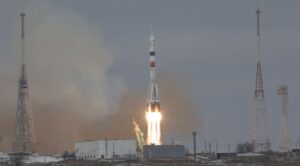
A Soyuz spacecraft launched Dec. 8 carrying two Japanese private astronauts and a Roscosmos cosmonaut on the first flight in more than a decade for space tourism company Space Adventures.
Mirror, mirror, on the Moon
Wednesday, 08 December 2021 11:21 Image:
Image:
Mirror, mirror, on the Moon, how far away are you?
MoonLIGHT or Moon Laser Instrumentation for General relativity/geophysics High-accuracy Tests is seeking the answer to this and more questions on general relativity, the gravitational dynamics of the Earth-Moon system and the deep lunar interior.
MoonLIGHT is a laser retroreflector, imaged here, which allows laser beams sent from Earth to be reflected back from the Moon to receivers on our planet. This allows very precise measurement of the distances between the reflector and the ground station.
Known as lunar laser ranging, this technique has been in use since the Apollo missions to investigate
A Saarland space feast sprinkled with science
Wednesday, 08 December 2021 10:10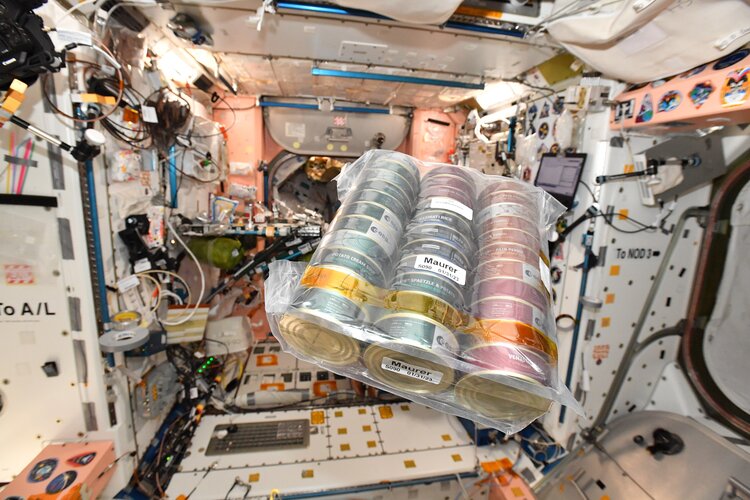
European food has always been out of this world, but this week ESA astronaut Matthias Maurer shared a taste of his home region, Saarland – with a serving of science – during a space-based Saint Nicholas feast.
Russian rocket blasts off carrying Japanese billionaire to the ISS
Wednesday, 08 December 2021 09:31 A Russian rocket lifted off on Wednesday carrying a Japanese billionaire to the International Space Station, marking the country's return to space tourism after a decade-long pause that saw the rise of competition from privately held US companies.
Online fashion tycoon Yusaku Maezawa and his production assistant Yozo Hirano blasted off from the Russia-leased Baikonur cosmodrome in Kazakhstan
A Russian rocket lifted off on Wednesday carrying a Japanese billionaire to the International Space Station, marking the country's return to space tourism after a decade-long pause that saw the rise of competition from privately held US companies.
Online fashion tycoon Yusaku Maezawa and his production assistant Yozo Hirano blasted off from the Russia-leased Baikonur cosmodrome in Kazakhstan BlackSky continues operational momentum with two back-to-back launches in six days
Wednesday, 08 December 2021 09:31 BlackSky plans to add another two satellites to its constellation Wednesday with the Rocket Lab mission titled "A Data with Destiny." Satellites from the SpaceX mission Thursday began delivering revenue-generating insights for customers less than 24 hours following launch and increased constellation revisit rates to six consistent visits per day in key markets during daylight hours.
"Black
BlackSky plans to add another two satellites to its constellation Wednesday with the Rocket Lab mission titled "A Data with Destiny." Satellites from the SpaceX mission Thursday began delivering revenue-generating insights for customers less than 24 hours following launch and increased constellation revisit rates to six consistent visits per day in key markets during daylight hours.
"Black Rocket Lab to launch three dedicated Electron missions for EO firm Synspective
Wednesday, 08 December 2021 09:31 Rocket Lab USA has signed a deal with Japanese Earth imaging company Synspective to carry out three dedicated Electron launches.
The first two missions are scheduled for lift-off from Rocket Lab Launch Complex 1 in 2022, with a third to follow in 2023. Each mission will deploy a single StriX satellite, growing Synspective's synthetic aperture radar (SAR) constellation developed to deliver
Rocket Lab USA has signed a deal with Japanese Earth imaging company Synspective to carry out three dedicated Electron launches.
The first two missions are scheduled for lift-off from Rocket Lab Launch Complex 1 in 2022, with a third to follow in 2023. Each mission will deploy a single StriX satellite, growing Synspective's synthetic aperture radar (SAR) constellation developed to deliver Milestone mission for China's first commercial rocket company
Wednesday, 08 December 2021 09:31 Galactic Energy, a carrier rocket maker in Beijing, has become the first private enterprise in China to have conducted two orbital missions that placed satellites in outer space.
The company's CERES 1 Y2 rocket, the second of its kind, blasted off at 12:12 pm Tuesday at the Jiuquan Satellite Launch Center in Northwest China's Gobi Desert and flew for about 14 minutes before deploying five
Galactic Energy, a carrier rocket maker in Beijing, has become the first private enterprise in China to have conducted two orbital missions that placed satellites in outer space.
The company's CERES 1 Y2 rocket, the second of its kind, blasted off at 12:12 pm Tuesday at the Jiuquan Satellite Launch Center in Northwest China's Gobi Desert and flew for about 14 minutes before deploying five 